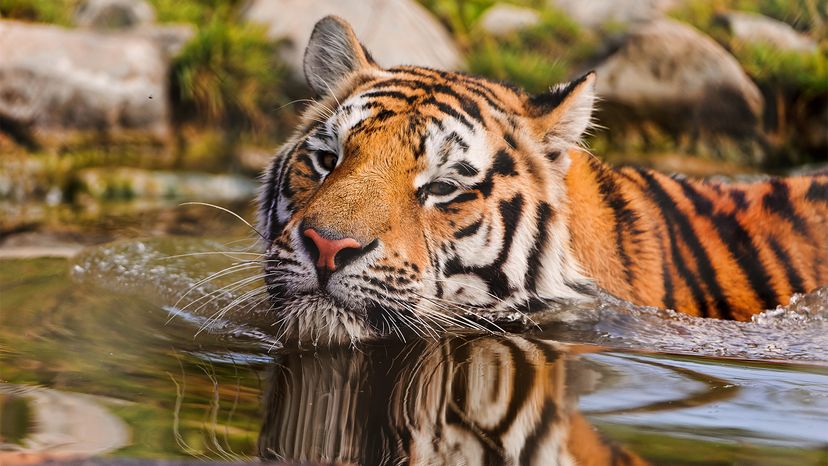This time last century, an estimated 100,000 tigers roamed their vast historical range, from the Caspian Sea, up to Siberia, all the way down to India and into the islands of Indonesia. Only 4,000 tigers remain in the wild today, covering just about 7 percent of their historical range. But a report published Oct. 25, 2018, in the journal Current Biology suggests that we're not only losing tigers, we're losing six distinct subspecies of tiger in Asia. Yes, it's depressing, but this information might also be key to conserving them.
If left to their own devices, tigers are hearty animals. Females have a litter of cubs every two to three years, and under good conditions, two to four cubs will survive. When you do that math, you find 10 tigers can pretty easily become 100 tigers over the course of a decade. The problem is, these big cats don't particularly like each other.
"They're solitary animals — the males retain huge territories of up to 150 square miles (400 square km), and they'll try to kill each other if they meet," says Dr. Matthew Luskin, a tiger researcher in the Asian School of the Environment at Nanyang Technological University in Singapore, who was not involved in the study. "The females within these territories compete for resources, too."
According to Luskin, tigers move astoundingly quickly through jungle habitat — you, frail human, could probably only walk about 6 miles (10 kilometers) a day through Sumatran rainforest, where a tiger can cover between 18 and 30 miles (30 and 50 kilometers) in the same amount of time. Point being, tigers do pretty well for themselves if they have enough space (and if they aren't killed by poachers, which is another tiger problem).
So, if tigers do well by themselves without human meddling, it follows there must be a way to convince governments that they need to give tigers more space, right? And though the world is currently home to only one species of tiger, the authors show there are six unique subspecies occupying the farflung reaches of Asia. It's one thing to lose Panthera tigris from Russia, but it's quite another when you frame it in terms of losing the Amur tiger, which is different from the Bengal, the Sumatran, the Indochinese, the Malayan, and the South China tigers. When you look at it this way, you'll notice that the Caspian, Javan and Bali tigers have already disappeared.



